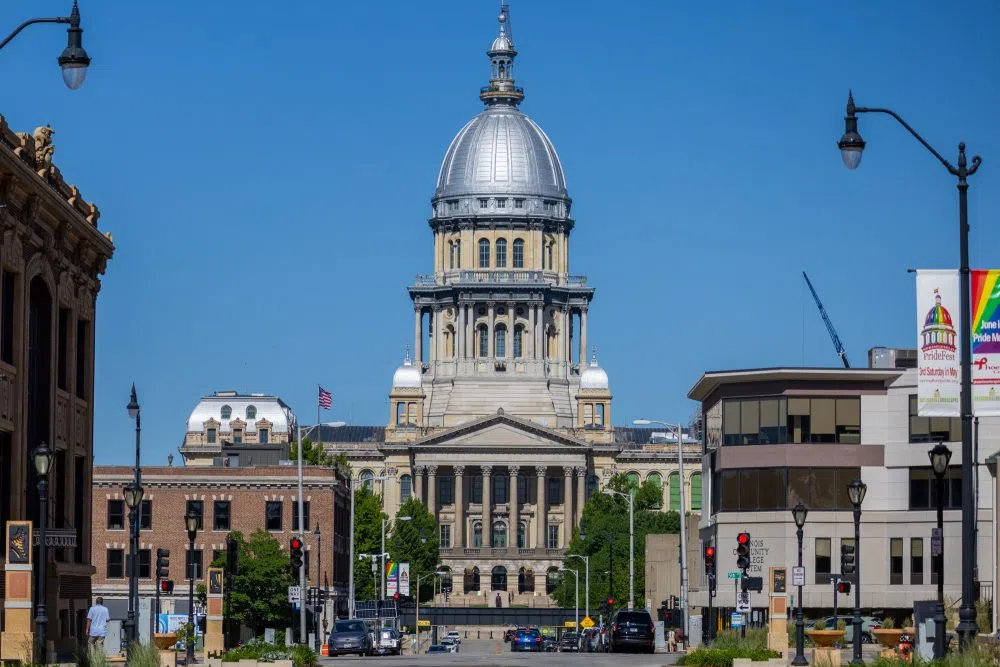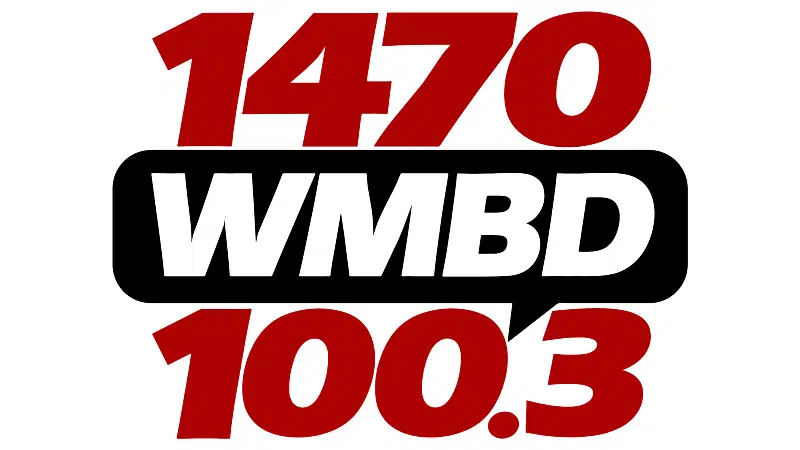SPRINGFIELD, Ill. (Capitol News Illinois) – Illinois entered a new fiscal year Monday with a bit of a financial cushion as the prior year’s revenues exceeded final projections by about $123 million.
The state ended fiscal year 2024 with about $4.7 billion cash on hand, or about 9 percent of the allocated spending for fiscal year 2025, which began July 1. That included a record high $2.1 billion in the state’s budget stabilization, or “rainy day” fund, which has seen its balance grow steadily over the past five years.
Comptroller Susana Mendoza noted the high cash balance helped Illinois generate over $558 million in interest income in FY24, a 53 percent increase from the previous year. She said in a news release she plans to exercise new authority granted to her office in the budgeting process this year to pre-pay required monthly pension payments while funds are available.
“This will enable the (pension) systems to plan accordingly and keep more of the pension funds in their investment portfolios,” Mendoza said in a statement.
Gov. JB Pritzker’s office said the year-end balance represents “part of a pattern of fiscally responsible policies.” He mentioned the nine credit upgrades Illinois has received from the nation’s three major credit rating agencies since he took office.
“Nine credit rating upgrades, bill backlogs eliminated, six balanced budgets, and now the state’s highest ever General Funds balance — this is the result of disciplined, responsible fiscal management that prioritizes serving taxpayers and helping working families,” Pritzker said in a statement.
The $52.6 billion in revenue collected in FY24 was about 4 percent more than the $50.6 billion anticipated when lawmakers approved the budget last May. But lawmakers largely allocated those unforeseen revenues in a supplemental spending plan approved this May, so the cash on hand represents more of a cushion for the upcoming fiscal year than a license to approve more spending.
The cash on hand is also not the same as a surplus, as it includes dollars that may have been appropriated but not yet spent.
The year-end revenues were published Tuesday by the legislature’s fiscal forecasting agency, the Commission on Government Forecasting and Accountability. Eric Noggle, COGFA’s revenue manager, noted revenues matched the agency’s March forecast almost exactly – a rarity in a fiscal landscape that has been difficult to project since COVID-19 first upended state finances.
REVENUE CHART
Read more: With recession fears subsiding, new state economic forecast expects ‘firm but steady growth’ | ANALYSIS: ‘Significant enough’ opposition to Pritzker’s revenue plan leads to call for cuts
Both Pritzker and Mendoza celebrated the fact that Illinois no longer has a backlog of unpaid bills.
In the wake of a two-year state budget impasse between Republican Gov. Bruce Rauner and Democrats in the General Assembly in 2016 and 2017, the backlog had risen to about $16 billion. Now, all bills are paid within 30 days of reaching the comptroller’s desk, Mendoza said.
“I’m committed to giving our state providers and vendors the stability and predictability that they should expect from state government,” Mendoza said in a statement. “Having received countless hardship calls from these providers and vendors during the state’s budget impasse, I believe it is the responsible approach we must continue to take.”
Still, COGFA’s June report noted that while state finances have improved in recent years, Illinois’ economy continues to lag the U.S. as a whole.
“Illinois’ poor economic performance has many contributing factors. The State has earned a reputation for poor fiscal health over decades,” COGFA chief economist Benjamin Varner wrote in the monthly briefing.
He mentioned the budget impasse, Illinois’ “relatively high business taxes,” and stagnant or declining population growth as contributing factors.
“Despite these challenges, the situation has been improving in recent years,” Varner added. “The State’s budget has been more balanced over the past five years, thanks to federal government aid, a strengthening economy, and improved budgetary discipline. This has led to a much more stable financial situation.”
That’s partially due to the state eliminating the bill backlog, building its fund reserves and allocating money to tax incentive programs that have lured businesses to move or expand here, he wrote.
Read more: Quantum technology companies set for big tax incentives under new law
“Although the Census Bureau still estimates that Illinois is losing population, the rate of annual declines has slowed,” Varner wrote.
Pritzker has also frequently noted that the state has lowered the corporate franchise tax paid by businesses in Illinois, exempting the first $10,000 in liability under the tax beginning in 2025. In 2019, the governor signed a plan to fully phase out that tax, but he ultimately reversed that decision amid the COVID-19 pandemic. He and lawmakers have since increased the exemption from $30 in 2020 to $10,000 in 2025 – a doubling from the previous year.
As for the fiscal year 2024 revenues, Illinois’ main funding source remains the personal income tax. Noggle noted the state collected $30.1 billion in personal income tax revenue in FY24 along with $6.5 billion in corporate income tax revenue, which collectively performed better than the previous year.
For the new fiscal year that began Monday, lawmakers approved $53.1 billion in spending, or roughly 1 percent more than FY24’s final revenues.
But Noggle also noted the last fiscal year included about $881 million in one-time revenues from sources that won’t repeat in FY25 – so base revenues will have to grow by over 2 percent to meet spending demand.
(Reporting by Jerry Nowicki, Capitol News Illinois)
Capitol News Illinois is a nonprofit, nonpartisan news service covering state government. It is distributed to hundreds of print and broadcast outlets statewide. It is funded primarily by the Illinois Press Foundation and the Robert R. McCormick Foundation, along with major contributions from the Illinois Broadcasters Foundation and Southern Illinois Editorial Association.







Comments